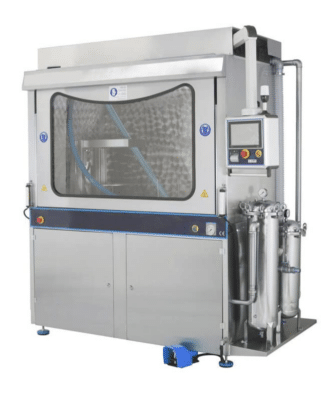Diesel particulate filters (DPFs) are essential components of modern diesel engines. They capture harmful soot and particulates, preventing them from polluting the air. However, DPFs can become clogged with soot over time, reducing engine performance and fuel efficiency. If left uncleaned, a clogged DPF can even lead to engine damage.
That’s where DPF cleaning comes in. There are several methods for cleaning DPFs, each with its own advantages and disadvantages. In this comprehensive guide, we’ll decode the different DPF cleaning methods to help you choose the best one for your needs.
Passive Regeneration
The most basic method of DPF cleaning is passive regeneration. This occurs naturally when the engine reaches high temperatures, burning off the accumulated soot. However, passive regeneration may not be effective for heavily clogged DPFs.
Active Regeneration
If passive regeneration is insufficient, active regeneration can be initiated. This process involves injecting additional fuel into the exhaust system, raising the temperature, and burning off the soot. Active regeneration can be triggered manually or automatically by the engine management system.
Forced Regeneration
For DPFs that are severely clogged, forced regeneration may be necessary. This process involves removing the DPF from the vehicle and placing it in a special oven that heats it to very high temperatures, burning off all the soot. Forced regeneration is the most effective cleaning method but is also the most expensive and time-consuming.
Chemical Cleaning
Chemical cleaning involves using a specia diesel particulate filter (DPF) cleaning fluid to dissolve the soot. The cleaning fluid is sprayed into the DPF through the exhaust system or directly into the filter itself. Chemical cleaning is less effective than forced regeneration, but it is a more affordable option.
DPF Replacement
In some cases, the DPF may be so damaged that it cannot be cleaned. In this case, the only option is to replace the DPF with a new one. DPF replacement is the most expensive solution, but ensuring optimal engine performance and emissions control is necessary.
Choosing the Right DPF Cleaning Method
The best DPF cleaning method for your vehicle will depend on several factors, including the severity of the clogging, your budget, and your DIY skills. If you are unsure which method is right, it is always best to consult a qualified mechanic.
Here are some additional tips for DPF maintenance
- Use high-quality diesel fuel. Low-quality fuel can contribute to DPF clogging.
- Avoid short trips. Short trips do not allow the engine to reach high enough temperatures for passive regeneration.
- Take your vehicle for regular highway drives. Highway driving helps to initiate active regeneration.
- Get your DPF checked regularly by a mechanic. Early detection of DPF problems can help to prevent expensive repairs.
By following these tips and choosing the right DPF cleaning method, you can help to keep your diesel engine running clean and efficient.
Unleash Your Diesel’s Potential!
Unlock the full power of your diesel vehicle at 30 Minute DPF Clean. Our expert cleaning services for DPF, EGR, and catalytic converters guarantee peak performance.
Call us today for a quote!


